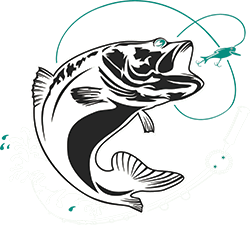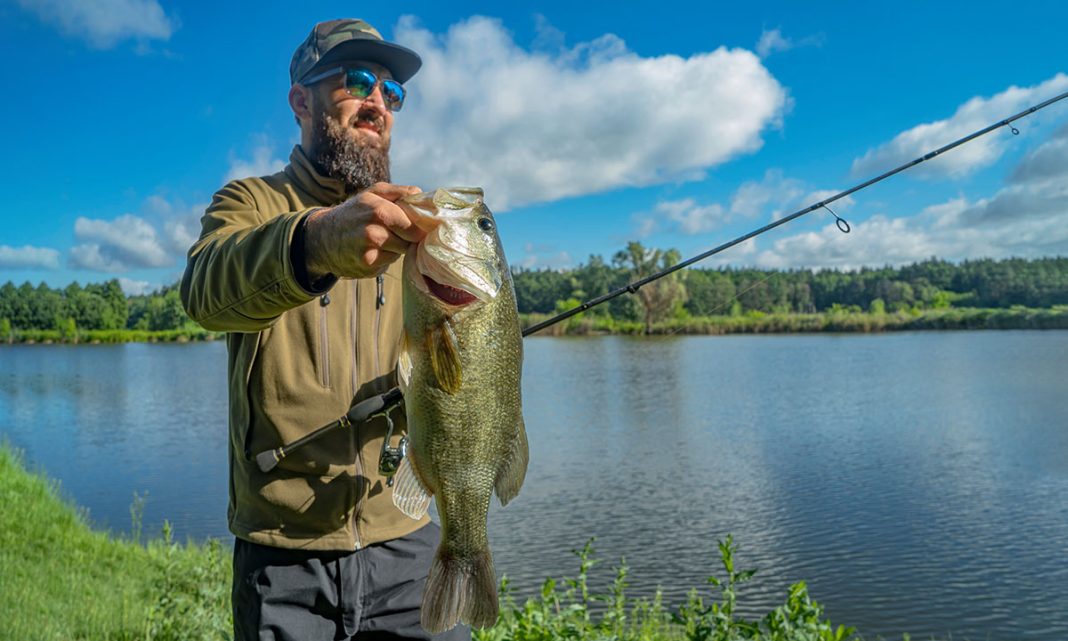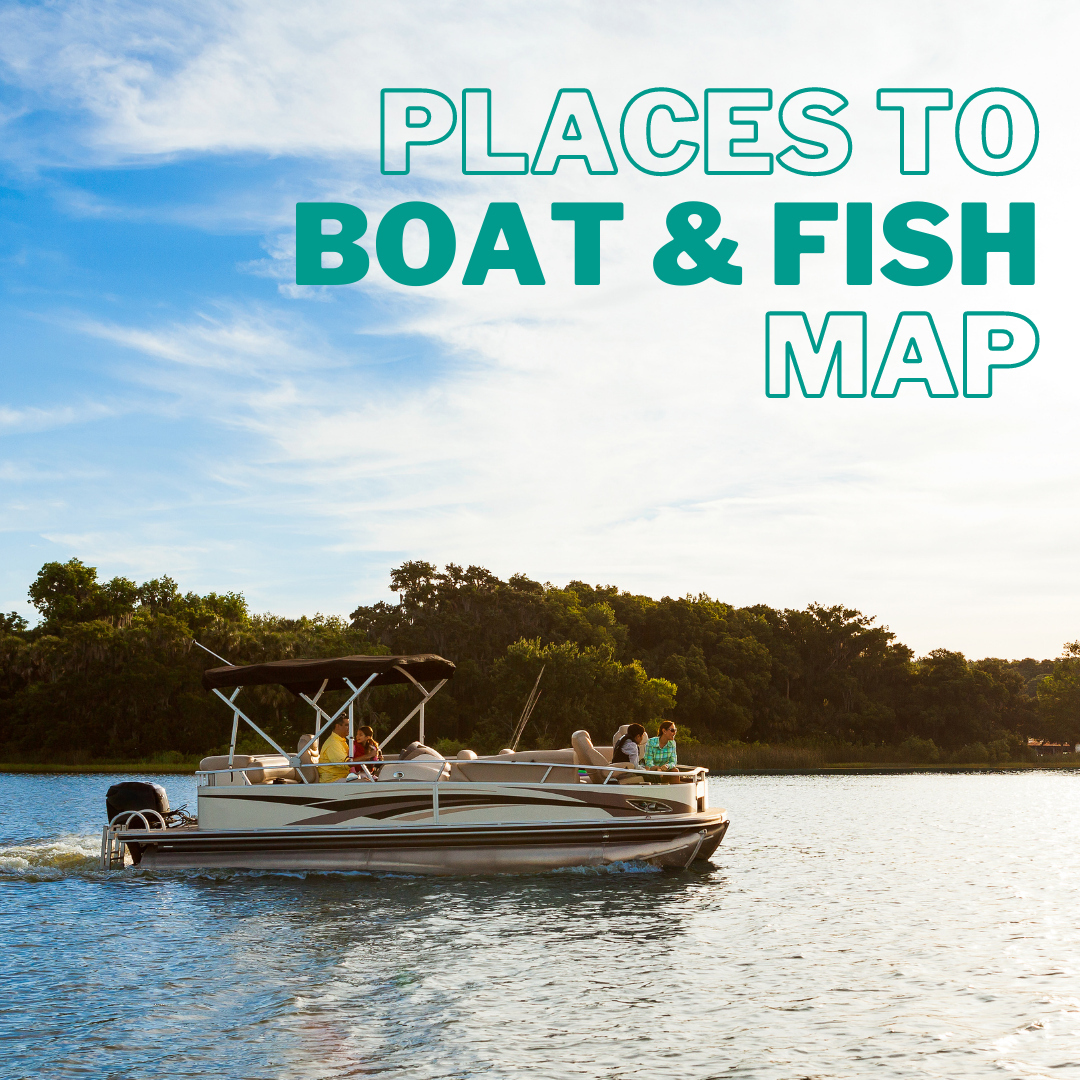There’s a special kind of feeling that comes with Florida bass fishing. It’s the humidity on your skin before sunrise, the sound of a trolling motor cutting through calm water, and the heart-stopping explosion of a monster largemouth crushing your bait. But the biggest bass in the Sunshine State often don’t live in open water. They live in places that would snag, snap, and frustrate the average angler. They live under a thick, tangled canopy of vegetation. To get to them, you need to learn one of the most effective and thrilling techniques in the sport. Learning how to punch heavy mats for Florida bass isn’t just another trick in the playbook; it’s a necessary skill for anyone serious about tangling with true giants.
This isn’t about finesse. This is brute force meeting opportunity. It’s about presenting a bait where few can, and triggering strikes from fish that feel completely safe in their shaded fortresses. Forget what you know about light line and casting a country mile. We’re going to war in close quarters.
Why Punching Is the Heavyweight Champion in Florida
Florida’s lakes and rivers are legendary for their vegetation. We’re talking about massive, sprawling fields of hydrilla, water hyacinth, pennywort, and Kissimmee grass. To a boat, it’s a barrier. To a big bass, it’s a five-star resort.
These dense mats create the perfect environment. The thick canopy blocks out the intense Florida sun, keeping the water underneath several degrees cooler. This shade also creates distinct ambush points. Furthermore, all that vegetation produces oxygen, and the complex structure provides a home for bluegill, crawfish, and shiners—a full buffet for a hungry bass. When that sun gets high and hot, bass don’t go deep; they go deep into the cover. Punching is your direct ticket into their living room.
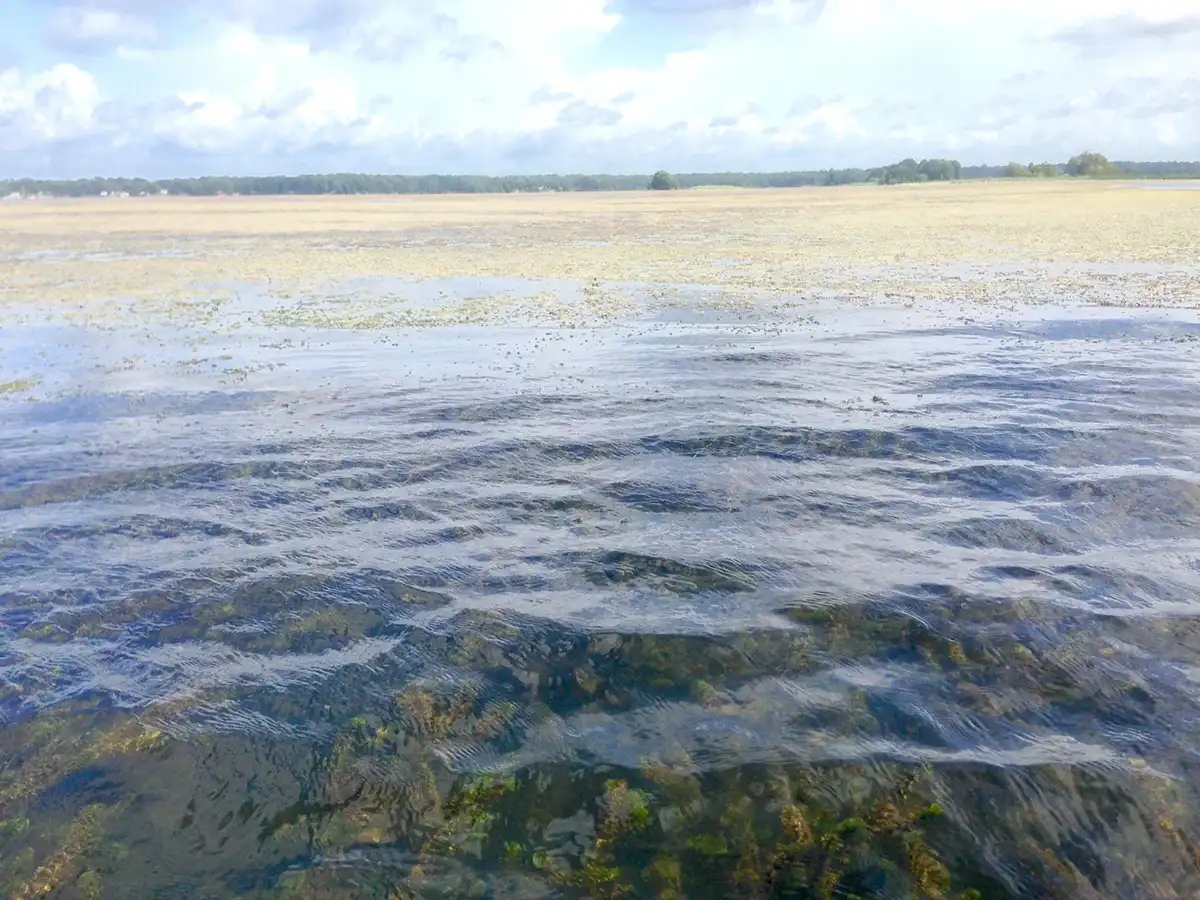
Gearing Up: The Tools for Close-Quarters Combat
Showing up to a punching fight with the wrong gear is like bringing a pocketknife to a sword fight. You’re going to lose your bait, your fish, and your patience. This is a power technique, and it demands specialized, heavy-duty equipment from top to bottom.
The Rod: Your Winch and Lever
Your rod is the most important piece of this puzzle. You need a stick with some serious attitude. Look for a rod that’s at least 7’6” to 8’0” long with a Heavy or Extra-Heavy power rating. The length gives you the leverage to pitch accurately and to pull fish up and out of the cover. The power rating, or backbone, is non-negotiable.
You aren’t just fighting the fish; you’re fighting the fish plus 15 pounds of wet, clinging hydrilla. A medium-heavy rod will fold under the pressure. You need a rod that can literally winch the fish and the salad it’s wrapped in back to the boat. Look for a fast or extra-fast action. This means the rod bends mostly at the tip, which gives you the sensitivity to feel a subtle bite and the speed for a lightning-fast, powerful hookset.
The Reel: All About Torque
Pair that beast of a rod with a reel that can keep up. A high-speed baitcasting reel is the only real choice here. You want a gear ratio of at least 8.1:1 or higher. Why so fast? When a bass engulfs your bait under a mat, you have a split second to act before it turns and wraps you around a dozen stalks of grass.
A high-speed reel allows you to pick up any slack line instantly as you drop your rod tip, ensuring a direct connection for a bone-jarring hookset. It also helps you pull the fish toward you faster once you get its head turned. Make sure the reel has a strong, smooth drag system and a large handle for maximum cranking power.
The Line: The Unbreakable Connection
Leave the fluorocarbon and monofilament at home. Punching is the exclusive domain of heavy braided line. We’re talking a minimum of 50-pound test, with 65- or 80-pound test being the standard for most serious punchers. Braid has zero stretch, which is critical for two reasons.
First, it allows you to feel the most delicate bites. Sometimes a big bass will just softly “mush” the bait, and with braid, you’ll feel that change in pressure. Second, that zero-stretch quality transfers all the power from your hookset directly to the hook point, driving it home. Braid’s incredible strength and abrasion resistance also allow it to slice through vegetation rather than getting hung up in it. Don’t worry about line-shy bass; in that dark, thick cover, they won’t see it.
The Business End: How to Rig for Punching Heavy Mats for Florida Bass
Your terminal tackle setup is where the magic happens. A properly rigged punch setup is designed to do one thing: slide cleanly through the thickest cover possible without hanging up. Every component has a purpose.
The Weight: Your Battering Ram
The heart of the punch rig is a heavy weight, typically ranging from 1 ounce to a massive 2 ounces. The rule is simple: use just enough weight to break through the mat cleanly. On a windy day or in super-thick hyacinth, a 1.5-ounce or even 2-ounce weight might be necessary. For thinner grass, you might get away with 1 ounce.
While lead works, tungsten is far superior for punching. Because tungsten is denser than lead, a 1.5-ounce tungsten weight is significantly smaller than its lead counterpart. This compact profile penetrates cover much more efficiently. It’s also much harder, so it transmits vibrations up your line, letting you feel the bottom composition and every subtle tap. They are more expensive, but the performance difference is night and day.
The Punch Skirt & Bobber Stop
This is a critical detail many anglers miss. Between your weight and your hook, you should add a punch skirt. This piece of silicone adds bulk, color, and a lifelike pulsating action to your presentation, mimicking a crawfish or bulky bluegill.
Even more important is the bobber stop you’ll place on your line *above* the weight. This is often called “pegging” the weight. By sliding the bobber stop down so it rests against the top of your weight, you keep the entire package—weight, skirt, and bait—together as one compact unit. Without it, your weight would slide up the line on the pitch, and your bait would get hopelessly snagged on the surface of the mat.
The Hook: The Final Connection
You need a hook designed for this kind of brutal, close-quarters combat. A standard extra-wide gap (EWG) hook can work, but most seasoned punchers prefer a heavy-duty, straight-shank flipping hook. These hooks, often equipped with a molded bait keeper, provide a more direct line-pull for better penetration on the hookset.
Look for a 3/0 to 5/0 size, depending on your soft plastic bait. Ensure it’s a 1x or 2x strong wire hook with a welded eye. You’re putting a lot of force on this connection, and a cheap hook will bend out, costing you the fish of a lifetime.
Bait Selection: The Meal Ticket
Your bait should be compact and durable. You want something that slides through cover easily and can withstand multiple fish catches. This is where beaver-style baits and compact creature baits shine. Their streamlined bodies and minimal appendages slip through the grass without grabbing every stalk on the way down.
Color selection is straightforward. In Florida’s often-stained water, dark colors are king. You can rarely go wrong with Black & Blue, Junebug, or Hematoma. In clearer water or areas with a lot of bluegill, a good Green Pumpkin or a color that mimics a bream is a great choice. [INTERNAL LINK: A relevant article on FLBassInsider.com about choosing the right soft plastics for Florida bass]
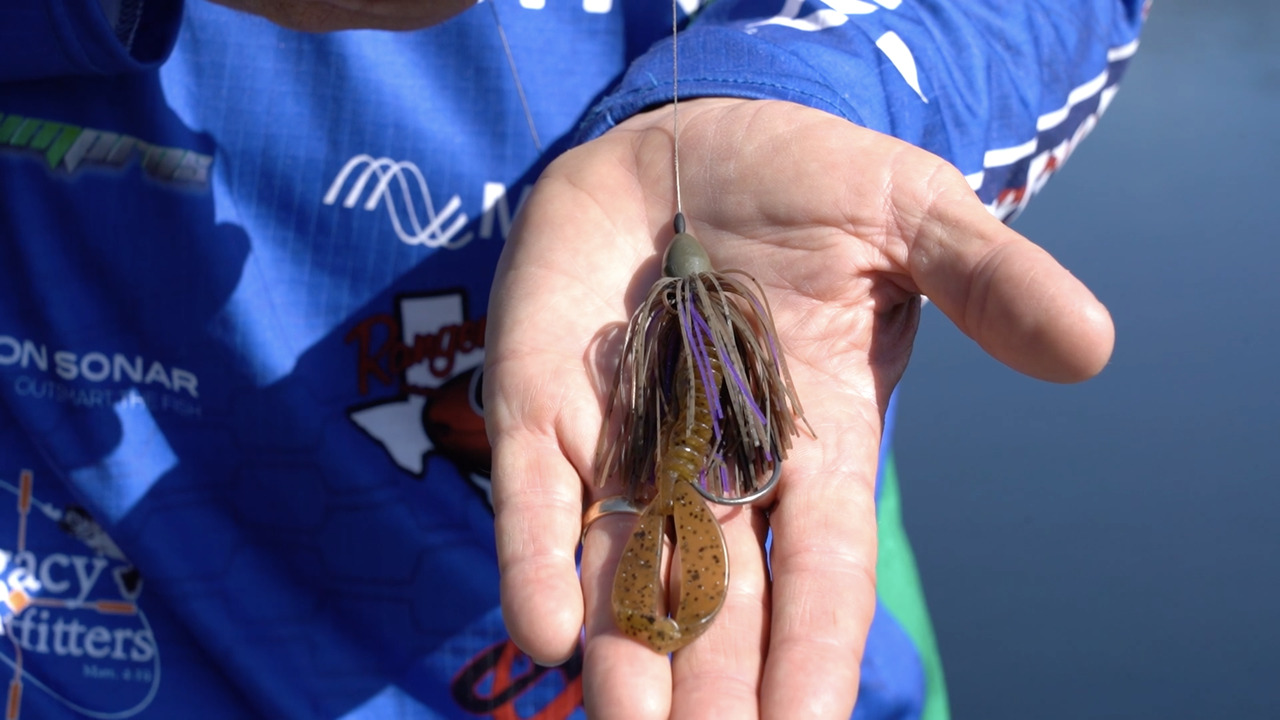
The Method: Putting It All Together
Having the right gear is only half the battle. Your approach and execution are what turn a day of casting into a day of catching.
Finding the Sweet Spots
Don’t just start flipping at the edge of a half-mile grass mat. Look for something different. Bass use irregularities as ambush points. Look for points and indentations in the grass line, isolated clumps of different vegetation (like hyacinth mixed in hydrilla), or areas where the mat is thickest and provides the most shade.
Pay close attention to your electronics to find harder bottom areas or subtle depth changes underneath the mat. These are high-percentage spots. Sometimes, the most productive areas are the ones that are hardest to get to.
The Pitch, The Fall, The Bite
Punching is a close-range technique. You’ll use a short, quiet underhand pitch to present the bait. Let out about a rod’s length of line, swing the heavy bait back, and gently pitch it towards your target, letting it enter the water with as little splash as possible.
Let the weight do the work, pulling the rig through the canopy. Once it breaks through, pay close attention. Most strikes happen on the initial fall. The bite might be a distinct “thump,” but often it’s much more subtle. You might just feel a “mushy” weight, a slight tick, or see your line start swimming sideways. Anything that feels different is a fish. Set the hook!
The Hookset and The Fight
This is the moment of truth. When you detect a bite, reel down fast to remove any slack, drop your rod tip, and set the hook with everything you’ve got. You want to drive that hook home and immediately get the fish’s head turned upwards and moving toward the boat.
Do not “play” the fish. This is a winch-and-pull operation. Keep your rod high, keep reeling, and pull the bass up and over the vegetation and into the boat. It’s chaotic, it’s violent, and it’s one of the most exciting moments in bass fishing.
Prime Time and Top Florida Punching Waters
While punching can work all day, certain times are better than others. The midday period, when the sun is highest and brightest, can be fantastic. The intense sun pushes bass deep into the shade of the mats, concentrating them in predictable locations.
Florida is blessed with countless phenomenal punching lakes. The undisputed kings are Lake Okeechobee and the Kissimmee Chain of Lakes (including Toho and Kissimmee). These bodies of water are famous for their vast fields of reeds, hydrilla, and floating mats that hold giant bass. The St. Johns River is another fantastic option, with its endless backwaters filled with lily pads and hyacinth. You can learn more about tournament-winning techniques on these lakes from resources like the official Bassmaster tournament recaps. [INTERNAL LINK: A relevant article on FLBassInsider.com about fishing Lake Okeechobee] [INTERNAL LINK: A relevant article on FLBassInsider.com about the Kissimmee Chain of Lakes]
Mastering how to punch heavy mats for Florida bass is a journey, but it’s one that pays off with the heaviest fish in your livewell. It takes practice and confidence, but there’s no better way to target the true queens of Florida’s waters. So gear up, find the thickest, nastiest cover you can, and get to work. That personal best is waiting for you under the canopy.
